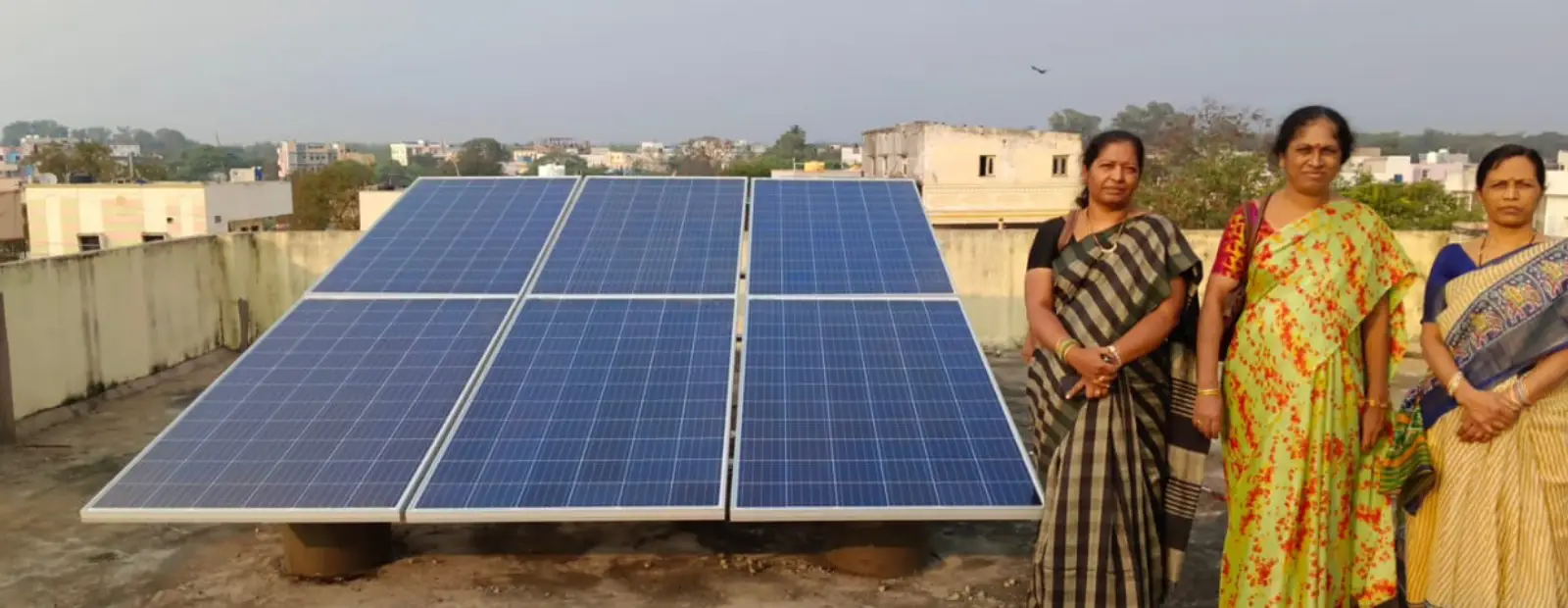
The Telangana government has started a plan to install solar panels in 1521 government schools throughout the state as an innovative step toward encouraging sustainable education. This large-scale initiative aims to lower emissions of carbon while promoting green energy consumption in the educational sector while also benefiting from on-grid solar companies in Hyderabad.
The project will be carried out in two phases where five hundred schools shall have solar panels installed in the first phase. The Telangana government is actively pushing the use of clean energy sources and reducing the carbon impact of its educational system by installing rooftop solar panels in public schools.
Benefits of Solar Energy in Schools, Including Cost Savings and Environmental Impact:
One of the main advantages of solar energy is that it can be used without diminishing other natural resources because it is a renewable resource. The use of solar energy in schools can promote environmentally conscious practices and assist the sector as a whole minimize its carbon footprint. Solar panel installation in educational institutions is another way to spread awareness of renewable energy’s benefits and its ability to halt the effects of global warming.
Solar energy in educational institutions has many financial benefits. Due to the increasing cost of electricity, schools typically fall under pressure to reduce their energy usage and find ways to save money. By installing solar panels on their roofs, schools can generate their electricity while decreasing their dependency on the on grid solar system in Hyderabad, which could end up in substantial long-term cost savings.
Telangana’s choice to solarize its schools is a step in the right way toward promoting the use of renewable energy sources and constructing a more sustainable future. The program intends to advance the state’s goals for energy from renewable sources while additionally improving the lives of pupils, teachers, and communities.
How Does a Grid Solar System Work?
An on-grid solar system, also known as a grid-tied solar system, is a solar energy system that is connected to the main electricity grid. The system generates electricity from solar panels and feeds any excess energy back into the grid. Here’s how an on grid solar system works:
Solar energy is converted into Direct Current (DC) electricity using solar panels. An inverter receives this current after that. Since all the power generated is typically far more than a home needs or is capable of handling, the grid-tied inverter also controls the quantity and voltage of electricity sent to the household.
Potential for Telangana’s Initiative to Inspire Other States and Countries to Adopt Sustainable Energy Practices in Education
This initiative’s size is one of the main characteristics that distinguishes it. It requires a lot of labour to install solar panels in 1521 schools. Another interesting aspect is the initiative’s potential to have an impact on lowering carbon emissions and advancing sustainable development.
Schools turning into solar sources may have effects that go beyond education. It may encourage research and innovation, assist create job opportunities in the renewable energy sector, and help the economy expand and thrive.
Four Solar is a solar Engineering, Procurement, and Construction (EPC) company that focuses on rooftop solar installations. The company has a track record of successful rooftop solar installation across India. Recently, Four Solar has been awarded a significant part order for the installation of on-grid solar panels on 1521 government schools across Telangana.
